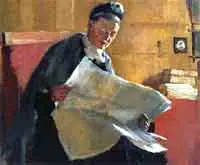 What is HDR? ‘“ The Development
What is HDR? ‘“ The Development
HDR or High Dynamic Range imaging is a term you will usually read or hear when it comes to image processing, computer graphics and photography. Since 1850, HRD concept had already been around. However, it is not yet that popular but in 1997 it has just started to be acknowledged in the digital imaging world. HDR is actually not just a single but a set of technique, which the best tones from several image exposures are taken and bring together into a single HDR image.
The history of HRD can be taken back from 1850, when the thought of using quite a few exposures to resolve an intense range of luminance came out of Gustave Le Gray’s mind. The idea came out when he thought of rendering seascapes that shows together the sea and the sky. To fix the problem, Le Gray utilized a negative intended for the sky and another negative used for the sea. However, the negative used for the sea have longer exposure time. The two negatives were combined to produce a single image in positive.
Probably because of Le Gray’s idea, Charles Wyckoff thought of developing the HDR imaging technique in the years 1930s and 1940s. As result, his picture of a nuclear explosion was featured on the cover of the then famous Life magazine in the mid 1950s. His process involved combining film layers with different exposure time into only a single image. The result is an image exhibiting a greater dynamic range. He called his process manual tone mapping.
In the mid-century, tone mapping is done through dodging and burning. The process involves increasing and decreasing exposures of particular regions of a photograph. The result is an improved tonality reproduction. The dodging and burning technique was made an art form by Ansel Adams. He uses the two techniques in his prints in his darkroom. However, the introduction of color photography, the technique of tone mapping in the darkroom had become impossible.
In 1980, HDR imaging was used by the movie industry. In 1985, the first HDR imaging file format was created by Gregory Ward and was known as the Radiance RGBE image file format.
In 1988, the idea of Wyckoff coming from way back in the 1930s was used by a group in Israel (Technion led by Zeevi) but this time the idea was applied to a video camera. The group’s idea became a success and in 1993, the first medical camera producing HDR video was introduced.
As technology becomes more modern, the HDR imaging started to use a different approach. The introduction of digital cameras and user-friendly computer software programs paved way for the modern HDR.
In 1996, Steve Mann introduced his personally developed and patented global-HDR.
In 1997, Paul Debevec introduced to the public the technique of combining several images with different exposure time in to a single HDR image.
The year 2005 made a great mark in the development of HDR imaging. Adobe, with their release of Photoshop CS2, introduced the Merge to HDR function. Photoshop enthusiasts were able to experiment with digital HDR imaging. The result was far better off than the traditional ideas of exposure control.










Leave a Reply